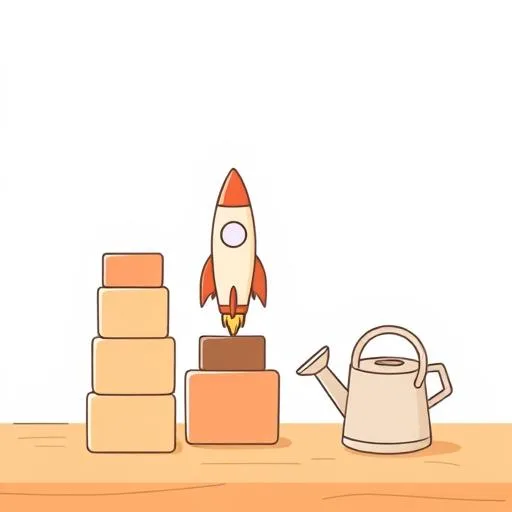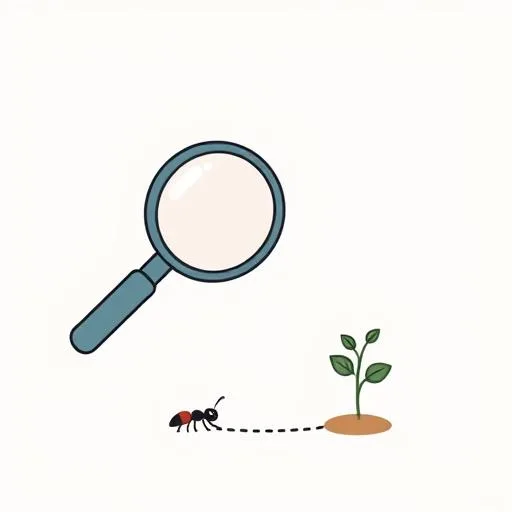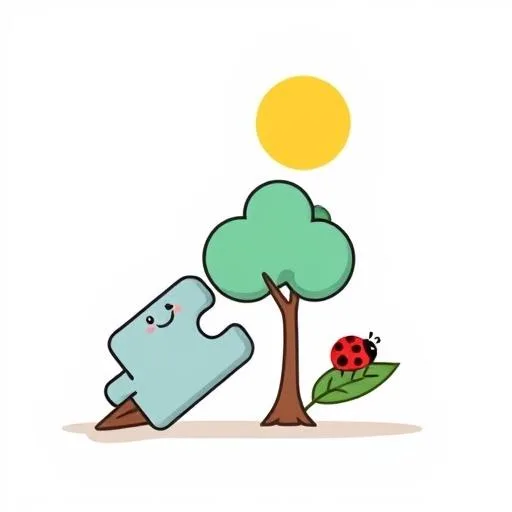
Twenty-person teams hitting $100 million in revenue? That’s not sci-fi—it’s Tuesday in 2025. Watching tiny startups reshape industries, I wonder: What’s the real magic ingredient kids need in this world of AI leaps and bounds? And you know what? That spirit mirrors exactly what we want for our kids.
How Can Small Teams Inspire Big Dreams in Kids?

Nearly 5,000 AI startups launched globally just in the first half of this year—that’s 27 ideas taking flight before breakfast every single day. And get this: venture capital poured in doubled to $140 billion. But the jaw-dropper? Companies like Anysphere (creators of that popular coding tool Cursor) hit $100 million with just 20 people. No massive offices, no armies of interns—just focused passion meeting smart tools.
Sound familiar? It’s like watching a child turn a cardboard box into a spaceship with nothing but markers and imagination. That’s our parenting guiding light: big impact begins with small, unhurried explorations. When we guard unstructured playtime—whether it’s fort-building or cloud-watching—we’re nurturing the exact ‘scrappy spirit’ driving today’s innovation. No spreadsheets required, just space for ‘what if’ to become ‘look what I did!’
What’s the Real Superpower for Kids in the AI Age?

Recent studies show workers using AI boost output by 66%—decades of productivity gains compressed into weeks. But here’s what gets missed: that rocket fuel hits hardest for beginners. Now, flip that lens toward our kids. Picture a child using a language app like Speak (the one loved by 10 million learners). It’s fun! But what truly sticks? The app drill—or the Saturday morning Grandma teaches them a song in her native tongue? AI can build vocabulary lists, but human connection gives words heartbeat.
That’s why we balance screens with sandcastles. Let tech assist, but keep time grounded in park adventures and kitchen table giggles. When a child spends 20 minutes watching ants carry crumbs, that’s not ‘lost time’—it’s incubating the observation skills no algorithm replicates. Resilience grows where curiosity breathes freely, not where metrics rule.
How Do We Shift from Tech Hype to Helpful Tools?

Remember when AI startups raced to unveil flashiest models? Now the smart ones pivot to solving real problems: like OpenEvidence’s tool summarizing medical research for doctors, or turning language learning into joyful play. That shift—from noise to nurture—is our parenting playbook too.
Next time tech promises ‘revolutionary learning,’ ask: Does this spark wonder or just check boxes? A drawing app that asks ‘What if we add wings?’ after a child sketches? Gold. One locking them into rigid steps? Not so much. Some kids ditch robot toys mid-maze to rebuild it in the sandbox—that’s the win. Tools should be springboards, not cages. Keep play open-ended, then trade screens for dirt-under-nails exploration. Because magic happens when imagination leads the dance.
Why Is Your Presence the Ultimate Parenting App?

Recent reports show AI isn’t killing careers—it’s pushing wages up for adaptable workers. But the human twist? Top performers thrive not by replacing themselves with machines, but by pairing tech with irreplaceable soft skills. Now apply that to raising kids.
Yes, consultants using AI finish tasks 25% faster with 40% higher quality. But a child’s ‘I did it!’ moment—stacking blocks, coding a tiny game—needs your full presence, not a distracted ‘good job’ while scrolling. That’s where emotional intelligence takes root. Secure relationships teach kids that mistakes are data points, not failures. So when startup headlines feel overwhelming, pause. Your child doesn’t need the ‘best’ AI tutor. They need you—fully there—when they name the bug they found ‘Mr. Wiggle.’ That’s the foundation no algorithm can build.
How to Nurture Forever-Skills in Kids with AI?

The buzz says AI creates jobs with fourfold productivity gains. For our curious 7-year-olds? The real victory belongs to those who blend creativity with compassion. After all, AI can generate code, but only humans ask: ‘Should we?’
Start small: When a block tower crashes, don’t rebuild it. Ask, ‘What made it fall?’ That’s critical thinking in action. Pair language apps with cultural festivals where kids bow, shake hands, and say ‘hello’ live. Because the tiny teams changing the world aren’t just tech-savvy—they’re deeply human. Let’s raise kids who value both. In a world of rapid change, the superpowers that last are curiosity, kindness, and the courage to try again—after mud pies, bubble baths, and bedtime stories. It’s in these small, present moments that we build not just skills, but souls ready to thrive. Now that’s a future worth building.
Source: The Realities of AI Start-ups in 2025, Less Wrong, 2025/09/08 09:22:07
